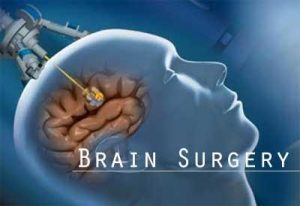- Home
- Editorial
- News
- Practice Guidelines
- Anesthesiology Guidelines
- Cancer Guidelines
- Cardiac Sciences Guidelines
- Critical Care Guidelines
- Dentistry Guidelines
- Dermatology Guidelines
- Diabetes and Endo Guidelines
- Diagnostics Guidelines
- ENT Guidelines
- Featured Practice Guidelines
- Gastroenterology Guidelines
- Geriatrics Guidelines
- Medicine Guidelines
- Nephrology Guidelines
- Neurosciences Guidelines
- Obs and Gynae Guidelines
- Ophthalmology Guidelines
- Orthopaedics Guidelines
- Paediatrics Guidelines
- Psychiatry Guidelines
- Pulmonology Guidelines
- Radiology Guidelines
- Surgery Guidelines
- Urology Guidelines
Migraine is treatable with surgery : AIIMS

Migraine surgery has been recently reported as an alternative to medical management to provide long-term relief in migraine sufferers.
A migraine is a neurological disease with extremely incapacitating neurological symptoms.It’s typically a severe throbbing recurring pain, usually on one side of the head. But in about 1/3 of attacks, both sides are affected.It is the 3rd most prevalent illness in the world and nearly 1 in 4 U.S. households includes someone with a migraine.It is most common between the ages of 25 and 55.
In a study published in Journal of Craniofacial Surgery, it has been claimed that 14 (46.7%) out of 30 patients reported complete elimination of a migraine after a year and an equal number reported significant relief of symptoms one year after the procedure. Only two (6.6%) patients failed to notice any significant improvement.
A prospective study was designed by Dr.Anson Jose et al. , wherein patients diagnosed with a migraine were screened for surgery by injecting botulinum toxin type A at the primary trigger site. Surgery consisted of corrugator supercilii muscle resection to decompress supra-trochlear and supra-orbital nerves with avulsion of zygomaticotemporal branch of the trigeminal nerve. Using pre and postsurgery questionnaires, information regarding the degree of reduction of migraines with regard to severity and frequency; and surgical site problems was acquired. Thirty patients volunteered for migraine surgery. Mean migraine headaches reduced from 15.2 ± 6.3 episodes per month to 1.9 ± 2.4 episodes per month (P < 0.0001) postsurgery. The mean intensity of a migraine headache also reduced from a preoperative 7.3 ± 3.5 to a postoperative of 1.3 ± 1.4 (P < 0.0001). Fourteen (46.7%) patients reported complete elimination of a migraine after surgery while an equal number reported significant relief of symptoms. Two (6.6%) patients failed to notice any significant improvement after surgery. The mean follow-up period was 11.1 ± 2 months with no major surgical complications. Results of the authors' study confirm prior published results that surgical treatment of a migraine is a reality. Surgeons can easily incorporate this simple surgical procedure in their armamentarium to offer relief to numerous migraine patients.
For more details click on the link :
https://www.researchgate.net/publication/320601850_Surgical_Management_of_Migraine_Headache [accessed Nov 13 2017].

Disclaimer: This site is primarily intended for healthcare professionals. Any content/information on this website does not replace the advice of medical and/or health professionals and should not be construed as medical/diagnostic advice/endorsement or prescription. Use of this site is subject to our terms of use, privacy policy, advertisement policy. © 2020 Minerva Medical Treatment Pvt Ltd